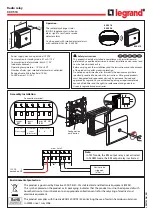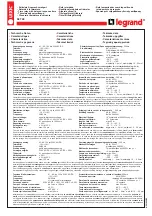
2–34
M-3520 Instruction Book
For this scheme to work, the capacitance to ground
of the lines must be fairly closely balanced and
high enough to keep the neutral of the system at
close to ground potential. The shunt resistor helps
to minimize the chance of ferroresonance or neutral
inversion. (
Applied Protective Relaying,
Westinghouse Electric Corporation, 1982.)
▲
Caution: This scheme should be used with
caution since it can result in high overvoltages due
to ferroresonance and neutral inversion.
Ground Fault Detection Using 27G and 59G with
One VT
An alternate, but not recommended, scheme uses
the 27G and 59G functions with one VT rated for
line-to-line voltage, but connected from any one
phase to ground as shown in Figure 2-24. This
scheme will detect the most common line-to-ground
faults in the following manner:
•
A fault on the phase that includes the VT
will pull that phase voltage low and initiate
operation of the 27G function.
•
A fault on either phase without the VT will
result in line-to-line voltage (or
S
3 x normal
line-to-neutral voltage) appearing at the
VT, initiating operation of the 59G function.
A
B
C
Power
Transformer
a
b
c
To Dispersed
Generation (DG)
To Utility
V
V
L-L
Fault on phase 'a' V = 0
27G detects Undervoltage
27G
59G
R
Fault on phase 'b' or 'c'
V = V
LL
59G detects
Overvoltage
Figure 2-24
Ground Fault Detection Using 27G and 59G with One VT
Summary of Contents for M-3520
Page 1: ...Instruction Book M 3520 Intertie Protection Relay ...
Page 83: ...2 50 M 3520 Instruction Book This Page Left Intentionally Blank ...
Page 95: ...M 3520 Instruction Book 3 12 This Page Intentionally Left Blank ...
Page 133: ...M 3520 Instruction Book 5 12 This Page Intentionally Left Blank ...
Page 195: ...A 20 M 3520 Instruction Book This Page Intentionally Left Blank ...
Page 213: ...D 12 M 3520 Instruction Book This Page Intentionally Left Blank ...
















































